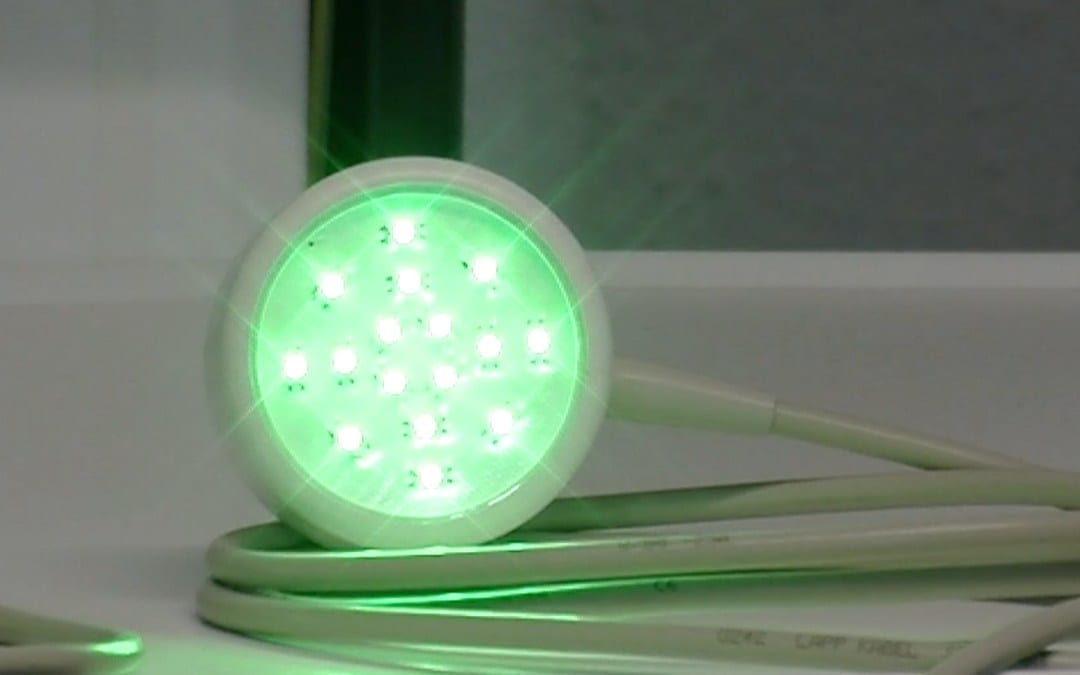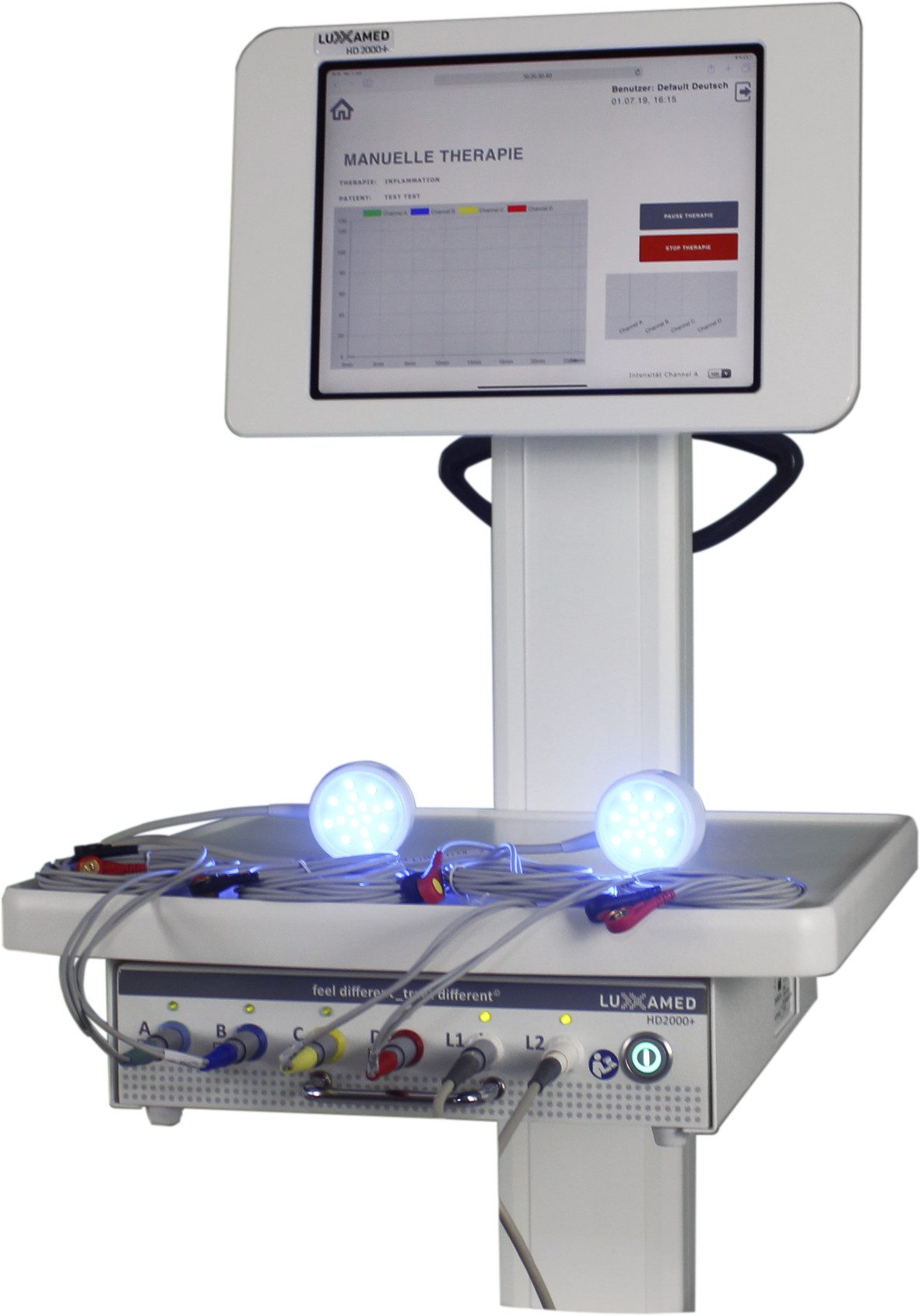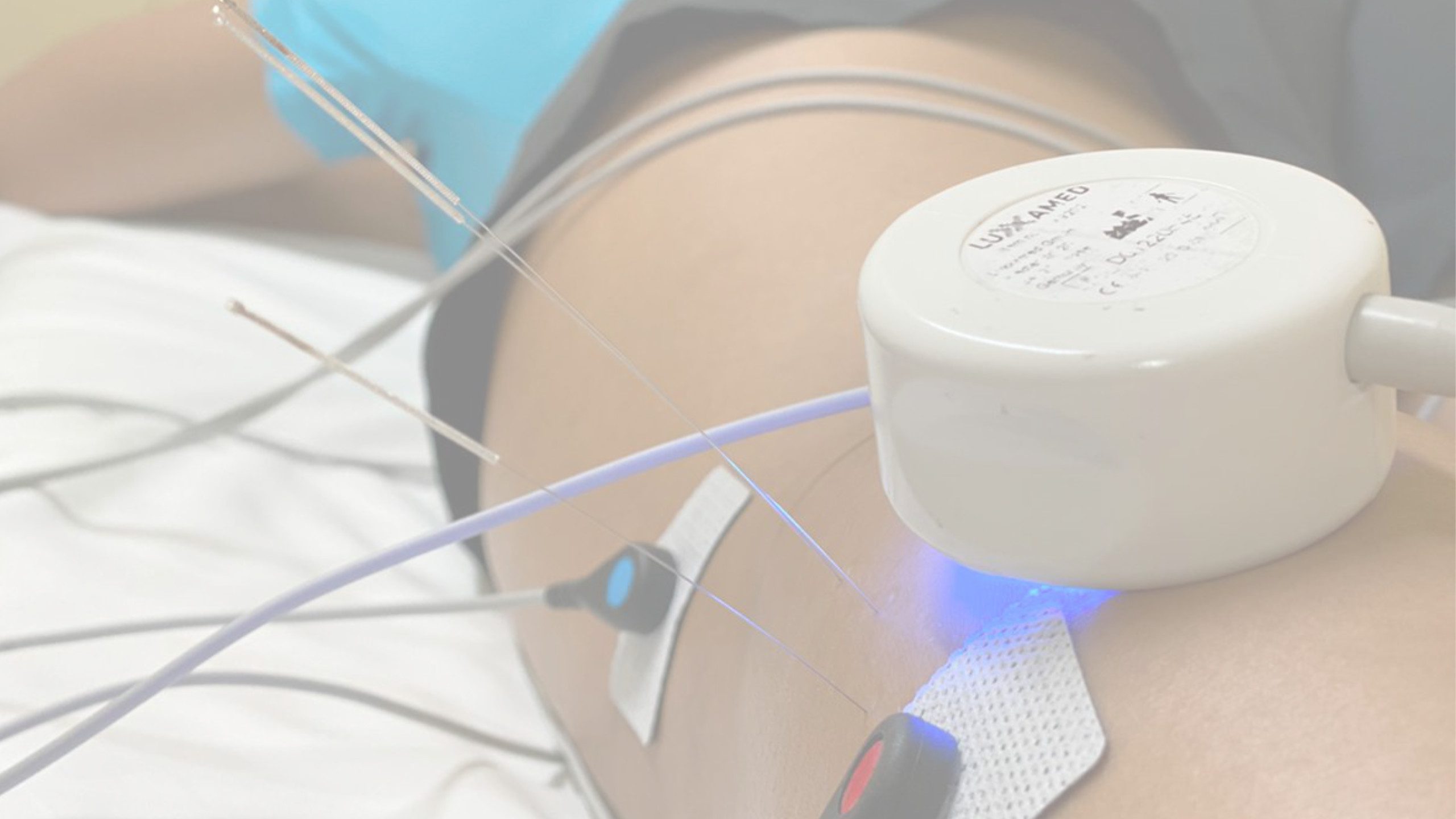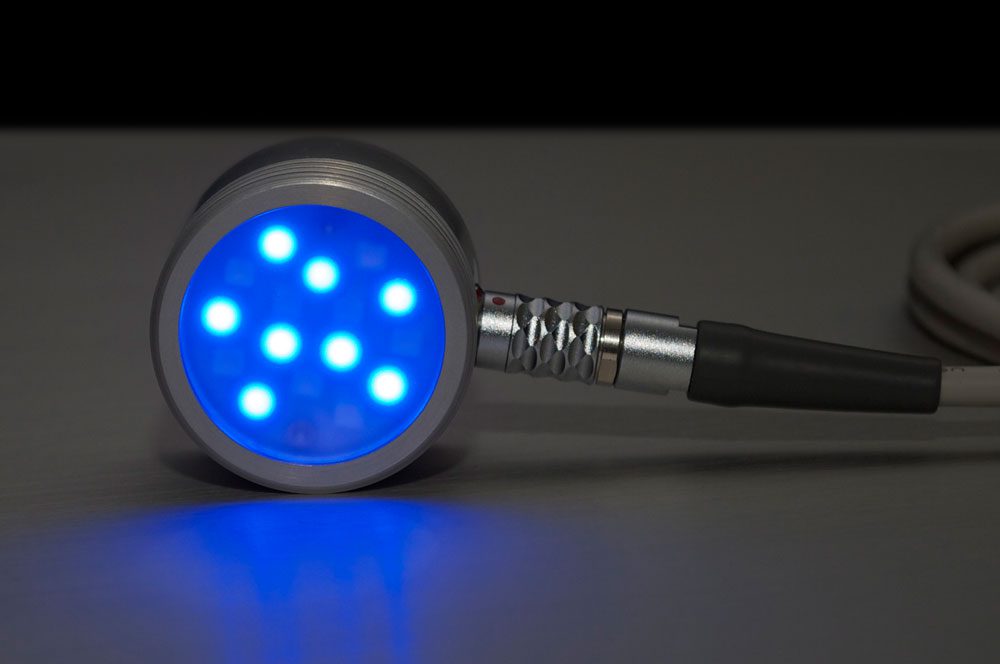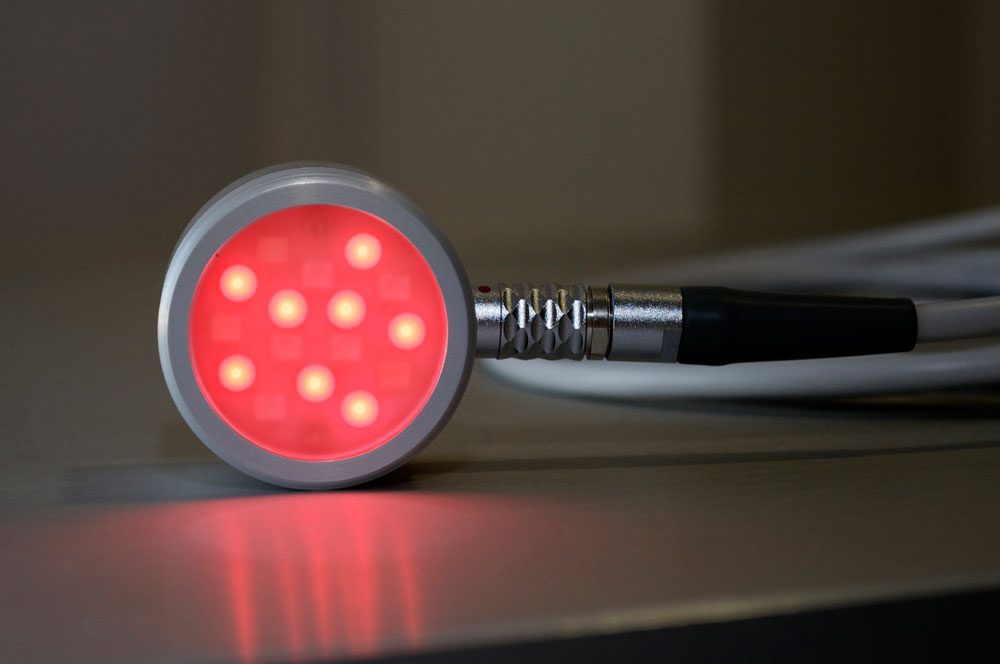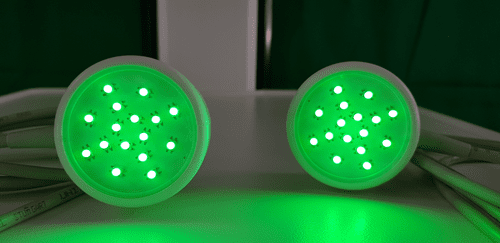LED Light Therapy
Dieser Beitrag ist auch verfügbar auf:
![]() Deutsch
Deutsch ![]() Italiano
Italiano
The nanophotons LED light therapy
The Luxxamed devices have an LED light source. The term nanophotons is a purely marketing term. The light therapy of the Luxxamed devices is carried out via LED's.
Safety of the Luxxamed LED light therapy
The Medical Device Directive (Directive 93/42 / EEC) requires medical device manufacturers to review and evaluate their devices. Medical devices with a light source must be tested and evaluated in accordance with EN 60601-2-57 (Assessment of photobiological safety), otherwise they may not be used in therapy. The requirement states that when using LED light in the context of a medical application, the safety, among other things, must be checked with regard to the intensity or light intensity.
Additional use of light therapy brings statistically significant added value!
A user study with 1417 treatments[7| showed that adding light therapy to the microcurrent application resulted in a statistically significant added value to the overall therapy! (p = 0,01)
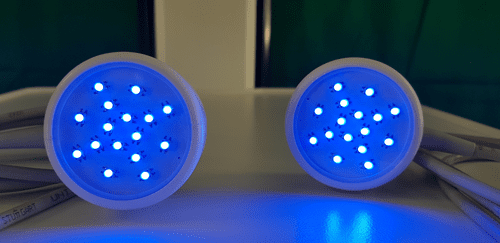
The Luxxamed devices work with different wave lengths (colors) that have been evaluated for their clinical effects as follows:
Effect of blue and red LED light
As part of research on the health benefits of light, it has been discovered that blue LED light initiates the body's own biochemical processes. These effects can be used effectively in pain therapy.
Decisive and new in the therapeutic application of blue LED light are biochemical processes around the molecule nitric oxide (NO), whose release is stimulated by the irradiation. For example, blue LED light has been shown to cause the production of NO down to the deeper regions of the skin. (Oplander et al., 2010)
The released NO triggered the following simplified biological effects in the body:
First, NO improves circulation and, as a result, supplies the muscle with oxygen and nutrients.
In addition, the removal of pain-causing substances is promoted. These processes lead to a soothing relaxation of the muscles. At the same time, NO directly on the nerves ends up undiminished there the pain transmission.
In addition to the analgesic effects NO are also attributed protective properties. It is considered antioxidant, cell protecting and anti-inflammatory. NO protects muscles and nerves from damage-also in the sense of prophylaxis.
The molecule NO, nitric oxide, was discovered by three Americans, Robert F. Furchgot, Ferid Murad and Louis Ignarro, for which the three scientists received the Nobel Prize in Medicine. The researchers were able to prove the importance of NO for the blood supply of organs and their role as messenger in the organism. (Angele, 2008)
Karutz describes the effect of blue LED as well as red LED. The effects of recovery of mitochondria on blue LED irradiation were higher than those of red LED (page 2 of the study: results) on page 3 of Fig. 1. The clarity is shown in a diagram. Also, the irradiation with red LED did not bring this effect to the extent as blue LED. (Wetzel & Karutz, 2013) Karutz's work has been carried out with the Luxxamed HD1000, making it an elementary basis for the development of LED light therapy in the HD2000.
The continuous production and release of endothelial nitric oxide (NO) plays an important role in vascular homeostasis by regulating blood vessel tone and inhibiting smooth muscle cell proliferation, blood cell adhesion, and lipid […] The recovery was drastically accelerated by illumination of mitochondria with blue light resulting in immediate and total recovery of mitochondrial respiratory function (Figure 1A). Green (530nm) and red (629nm) light sources were less efficient. (Dungel et al., 2008) “
Dungel describes in a study from 2008, the 'dramatic' effect of blue LED on cell metabolism, more specifically on the function of the mitochondria. The in-vitro study impressively demonstrated what effect the 'correct' wavelength can have on the production of NO in cell metabolism.
It turned out that especially blue light supports this effect. While green and red light are significantly less in effect on NO in the tissue. However, Dungel made it clear that the penetration depth of blue light is more limited compared to red light.
Photons with a wavelength of 630 nm and 800 nm can on average penetrate the tissue by up to 23 cm. (Dungel et al., 2008)
Another work on LED light in medical therapeutic applications is provided by Adamskaya et al. In a laboratory model for the treatment of wounds with blue LED light on rats.
The treatment of wounds with a low-level laser therapy has already been proven. Almost exclusively a wavelength in the infrared and / or near-infrared range was used. Adamskaya et al. Could prove the significantly better effect of blue LED light for the treatment of wounds. Further, the work showed that the mRNA improved. (Adamskaya et al., 2010)
At the Fraunhofer Institute, a study would be conducted in the spring of 2012 as part of a master's thesis. Specifically, this was to find out what the differences in the effect of red and blue LED light are from the medical point of view.
It was evaluated in how far the intracellular ATP synthesis can be influenced. Cell activity and cell regeneration were also considered. In a further step, the effect on inflammation was investigated. The study was performed in vitro on human cell cultures (keratinocytes and fibroblasts).
In the procedure, the cell cultures (undamaged) were irradiated with both the red LED light and the blue LED light. The same procedure was performed on damaged cell cultures.
With the results of the fibroblasts so far, the extent to which the LED light therapy of the Luxxamed HD1000 can be harmful to human cells was assessed by light microscopy. It was clearly stated that the LED light can not cause any damage.
In the clinical or laboratory results and thus the mode of action of LED light therapy shows an intracellular increase of ATP. In this case, it was further differentiated to what extent different effects are caused by the red LED light and the blue LED light. Specifically, it was noted that red LED light irradiation resulted in a greater intracellular increase in ATP content. Also with the irradiation with blue LED light an increase of the ATP content (intracellular) took place. In the case of the examination results, it should be emphasized very strongly that there was virtually no standard deviation in the various samples (cell cultures), which speaks for the mode of action of the therapy. The increase in ATP content was measured in undamaged cells as well as damaged cells.
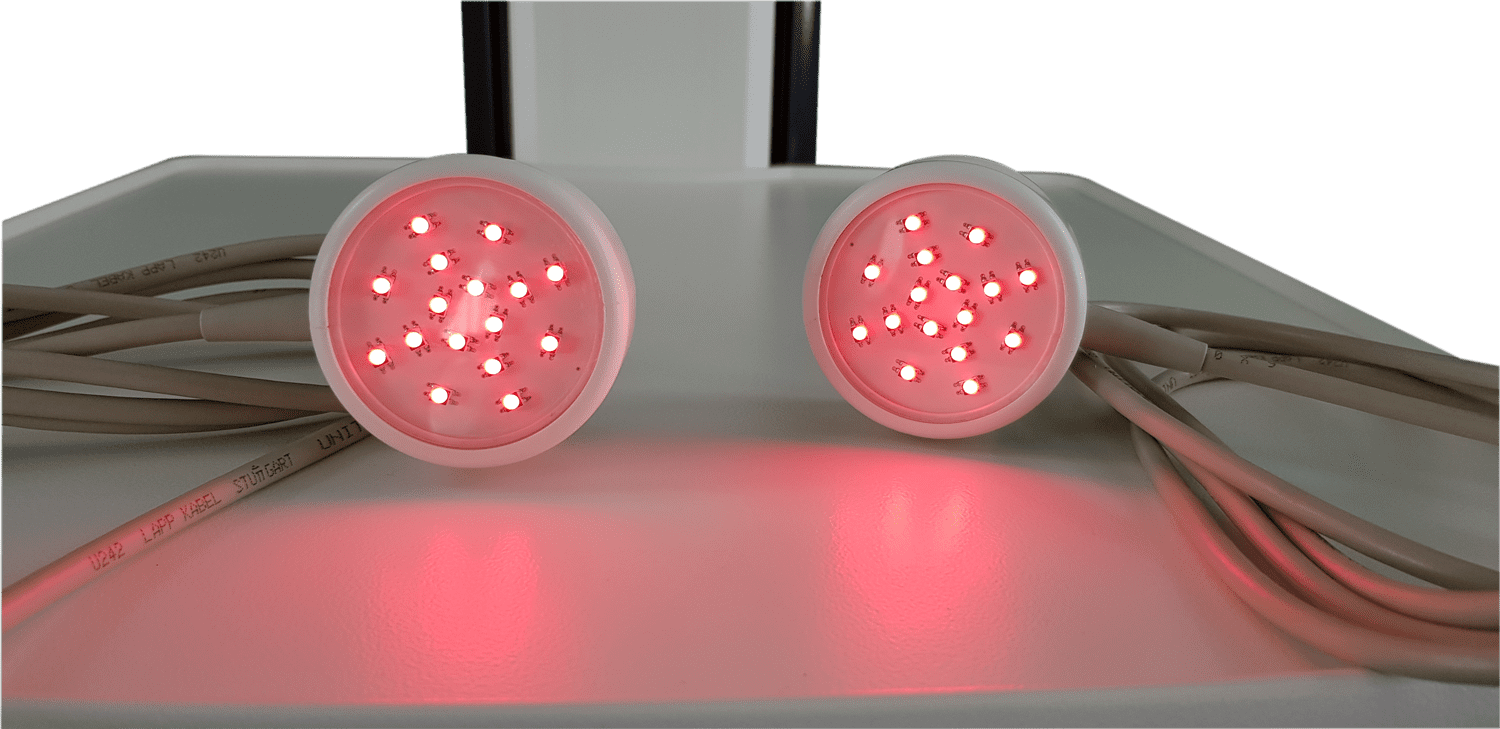
In order to be able to make an exact statement about the quality of the annealing effect by the nanophoton LED light therapy different phases of the cell cycle were examined. It could be stated that the cell vitality increases by the irradiation with red LED light. The cell activity or cell vitality of necrotic cells does not increase. It can also be observed that after the cell division phase, the cells pass to a greater extent in the direction of the resting phase as a result of the irradiation with red LED light. In contrast to the blue LED light, the cells tend to move in the direction of the cell division phase. From these already measured and validated results it can be seen inevitably that the procedure in the treatment for the users of the Luxxamed HD1000 is completely correct. (Wetzel & Karutz, 2013)
One of the main uses of LED light therapies is in the area of pain therapy. Since inflammatory processes are present in both acute and chronic pain, two inflammatory mediators from the cytokine family were observed by the Fraunhofer Institute.
Any kind of tissue injury or irritation causes an inflammatory reaction of the body, no matter where it occurs. The body reacts to an injury or irritation of the internal organs as well as to an inflammation as well as to damage to the joints or the outer skin. On the one hand, the pain associated with inflammation can be caused by a direct injury to the nerve cells. On the other hand, it hurts alone when the resulting swelling presses on nearby nerves. However, the main cause of pain in inflammation is the release of certain pain messengers. They are secreted by immune cells and are called prostaglandins, histamine, bradykinin, etc. A secondary chronic inflammation arises when the healing inflammatory processes are too weak or otherwise unsuccessful and thus inefficient.
At this stage, although the inflammatory symptoms are now weaker – including the pain. But the inflammation persists without ever completely healed. (Müller, 2013; Nürnberger, Hasse, & Pommer, 2010)
Approaches to biochemical effects in LED light have already been uncovered by versatile research on low level laser therapy. As with nanophoton LED light therapy, this is an alternative medical therapy for pain reduction, treatment of wounds and inflammation. In general, light is absorbed, reflected and scattered by tissue of human skin. Depending on the wavelength, frequency, intensity, coherence and time, light-absorbing units within the mitochondria and the cell membrane are stimulated. (Barolet, 2008, Wetzel & Karutz, 2013)
In the study with the Luxxamed HD1000. The LED light therapy was able to counteract the increase in concentration of IL-6 and IL-8 by the bacterial toxin LPS. In particular, the blue light irradiation resulted in a 17.8% reduction in the IL-6 content and 21.3% in the IL-8 content. Since these two cytokines are proinflammatory, this means that the inflammatory reaction is suppressed and thus an anti-inflammatory effect of light therapy was detected with the Luxxamed HD1000.
“The overall sum of the present work is that the use of nanophoton technology LED light therapy has a stimulating effect on the metabolic processes of human skin cells, which significantly influences the healing effect. The applied in practice combination of red and blue LED light in time-varying intervals has accordingly stimulating on many levels on the metabolism of the cells. The nanophoton technology LED light therapy thus has great potential in the alternative medical treatment of inflammation, wound healing and pain therapy. “(Wetzel & Karutz, 2013)
Die Wirkung der neuen Grünen-LED beim HD2000+
The Luxxamed HD1000, HD2000 and HD3000 use a pulsed LED light source, which has been influenced or modeled by the parameters used in the micro-current (patient line): current, frequency and rise of the therapy signal.
In HD2000 + this concept has been completely revised. From the discussions of the results of the study at the Fraunhofer Institute, (Wetzel & Karutz, 2013), it was shown that a 'continuous light' could bring greater success in therapy, since the cells were 'stressed' especially in in vitro application the higher
the pulsation of the LED was. From these experiences, the basis of the LED light therapy with HD2000 + emerged.
The use of green LED light in the medical therapeutic context is relatively new, although there are significant studies of younger age at the same time. Green light has the effect that the regeneration and healing processes can be significantly influenced. A work from 2015 shows the effect of green LED light on the model of rat skin, which has previously been damaged by a burn. Histological analysis of green LED light treated animals over a 7 day period showed a significant reduction of inflamed cells in the treated tissue. (Catao, Costa, et al., 2015)
The histological evaluations showed that the translation of arachidonic acid to prostaglandin could be reduced. In this regard, effects on the lipid bilayer of the cell membrane could be observed, resulting in stimulation of fibroblasts and increased production of collagen. The results emphasize the mode of action of green LED light on tissue healing and regeneration processes. (Catao, Costa, et al., 2015) The effects described in the 2015 work were also underlined in a similar 2014 study, conducted previously. In addition, a comparison was made with low-level laser therapy. The authors described a significant increase in collagen through the use of green LED light. (Catao, Nonaka, et al., 2015)
Sources
Please note the disclaimer on health claims)
[1] Adamskaya, N., Dungel, P., Mittermayr, R., Hartinger, J., Feichtinger, G., Wassermann, K., … van Griesven, M. (2010). Light therapy by blue LED improves wound healing in an excision model in rats. Injury, Int. J. Care Injured, (42), 917-921.
[2] Angele, C. (2008, October 14). The Nobel Prize for NO [Information page]. Retrieved April 10, 2017, from http://www.medizin-netz.de/wissenswertes/stickstoffmonoxid-no-ein-kleines-molekuel-mit-grosser-wirkung/
[3] Barolet, D. (2008). Light-Emittin Diodes (LED) in Dermatology. Seminars in Cutaneous Medicine and Surgery, (27), 227-238.
[4] Dungel, P., Mittermayr, R., Haindl, S., Osipov, A., Wagner, C., Redl, H., & Kozlov, A. (2008). Illumination with blue light reactivates respiratory activity of mitochondria inhibited by nitric oxide, but not by glycerol trinitrate. Elsevier, (471), 109-115.
[5] Müller, M. (2013). Surgery: for study and practice (12th ed.). Medizinische Vlgs- u. Inform.-Dienste.
[6] Wetzel, C., & Karutz, A. (2013, June 3). Determining the influence of nanophoton technology on invitro cell cultures (Master's thesis). Zittau International University of Applied Sciences, Zittau.
[7] PMCF study: Luxxamed GmbH (2021): PMCF – Post-market clinical follow-up to evaluate the clinical effectiveness of Luxxamed devices after marketing. PMCF-User Study 2021. As required by MEDDEV 2.7/1 Revision 4 and Medical Devices Regulation (EU) 2017/745. Ed. by Luxxamed GmbH. Kassel, last checked 25.11.2021.
[8] Opländer, C., Deck, A., Volkmar, C. M., Kirsch, M., Liebmann, J., Born, M. et al. (2013). Mechanism and biological relevance of blue-light (420-453 nm)-induced nonenzymatic nitric oxide generation from photolabile nitric oxide derivatives in human skin in vitro and in vivo. Free Radical Biology & Medicine, 65, 1363-1377. https://doi.org/10.1016/j.freeradbiomed.2013.09.022

